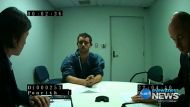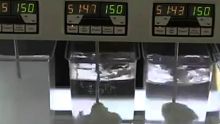Sydney is in for a scorching few days with elevated fire danger and increased risks of heat stress as temperatures climb towards 40 degrees.
Sea breezes spared the city on Monday, with the city's top limited to 26 degrees. Inland regions, though, sizzled with maximums nearing 35 degrees in Penrith and Richmond.
More NSW News Videos
Sydney weather: get set to swelter
Temperatures in Sydney will reach mid to high 30s on Tuesday with the region set to experience its hottest two consecutive days since last January.
The Bureau of Meteorology lifted its predictions for Sydney and now tips 36 degrees for Tuesday and 37 for Wednesday. Penrith can expect a toasty 39 on Tuesday and 38 the following day.
"It's going to be the hottest spell we've had since last summer," Brett Dutschke, a senior meteorologist at Weatherzone, said.
Adding to the discomfort will be the lack of relief between the two hottest days during this spell.
The 25-degree minimum tipped for Sydney on Wednesday morning would be the warmest for any month in four years.
But taking December alone, Sydney hasn't had such a sweltering night since 1972, Mr Dutschke said. For maximums, the city's also likely to have its warmest back-to-back days in December in 10 years.
Heatwave experts say the impact on health is often less to do with the maximum heat experienced but the opportunity for people to cool down. (See chart below for the bureau's prediction of a "severe" heatwave.)

Inland regions are also expecting a minimum of 25 degrees on Wednesday morning after a longer spell of days at or above 30 degrees than those living on the coast. Penrith residents may not see the mercury drop below 26, the bureau said.
Along with the heat, there's also the chance of thunderstorms on Monday and Wednesday, with a higher risk in the city's west.
Relief will finally come on late on Wednesday with the arrival of a cool change. Sydney's top for Thursday is forecast to be 22 degrees, with 23 tipped for western suburbs.
Health, fire warnings
Heat waves can bring on dehydration, heat cramps, heat exhaustion, heat stroke and exacerbating existing medical conditions like diabetes, heart disease and kidney disease.
Heat stroke in particular is a life-threatening condition needing urgent first aid and medical care.
Symptoms include a sudden rise in body temperature (to above 40.5 degrees); red and hot skin, dry swollen tongue, rapid pulse, intense thirst, nausea or vomiting, dizziness or confusion, poor coordination, aggressive behaviour and loss of consciousness.
If someone does develop heat stroke, call triple zero and try to bring their temperature down using any method available, health authorities say.
The best way to prevent heat-related illnesses is to drink plenty of water, stay as cool as possible and look after elderly relatives, who may be particularly prone to heat-related illnesses, according to NSW Health.
Across the state, one-third of the regions will have total fire bans on Tuesday as the hotter conditions arrive.
The bans apply from midnight and include the Illawarra/Shoalhaven region, the far south coast, the lower central west plains, the southern slopes, and the southern, eastern and northern Riverina districts, the Rural Fire Service said.
All but the north-east corner of the state - taking in New England, the northern slopes and the far north coast - will have either a "high" or "very high" fire danger rating for Tuesday, the RFS said.
This latest bout of heat will likely accelerate the browning off of vegetation already well under way across South Australia, Victoria and western NSW after a very wet winter and spring, Weatherzone's Mr Dutschke said.
"The greener areas are contracting to where the rivers are," he said. "The surrounds...are drying out very rapidly."
Follow Peter Hannam on Twitter and Facebook.
Weatherzone is owned by Fairfax Media, publisher of this website.
















